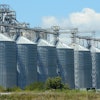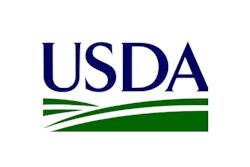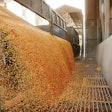
Smithfield Foods, Inc. has successfully engaged 80% of its grain supply chain, which is used to feed the company’s hogs, in farming practices that are both sustainable and reduce the cost of production for grain farmers.
This exceeded the company’s original goal of 75%. In 2018, Smithfield purchased grain from producers who use efficient fertilizer and soil health methods across approximately 560,000 acres of land.
Grain production is the first step in the vertically integrated company’s supply chain, making this accomplishment one of the key ways Smithfield is working toward its ambitious goal to reduce greenhouse gas (GHG) emissions 25% by 2025 throughout its entire supply chain – the first commitment of its kind from a protein company.
“This accomplishment is a significant milestone in our company’s holistic approach to reducing carbon emissions across our entire supply chain,” says Kenneth M. Sullivan, president and chief executive officer for Smithfield Foods. “It is important to note that it would not have been possible without the unified efforts of grain farmers, our company, Environmental Defense Fund, and other collaborative partners. This is an important achievement for everyone involved and for our environment.”
While fertilizer is an essential tool for agriculture, it can be a driver of crop-related GHG emissions. A study conducted in 2017 by the University of Minnesota’s NorthStar Initiative for Sustainable Enterprise, a Smithfield partner, estimated that grain accounted for 15-20% of the company’s carbon footprint.
To reduce the environmental impact of its grain supply, Smithfield teamed up with Environmental Defense Fund (EDF) to help farmers find ways to optimize fertilizer use and improve soil health through the Smithfield Agronomics program, also known as SmithfieldGro. The program has helped hundreds of grain suppliers implement efficient fertilizer optimization and soil health initiatives by providing:
- On-staff agronomists who demonstrate strategies and provide free agronomic advice to enable farmers to incorporate more efficient fertilizer practices.
- Access to reduced-price tools and programs that assist farmers in improving fertilizer usage, crop production, water quality, and soil health.
- Economic incentives to diversify crop production and create a market for winter wheat cover crops.
In conjunction with this announcement, EDF released a case study authored by Datu Research that describes Smithfield’s supply chain sustainability programs and the value they generate for the environment, farmers, and Smithfield itself. Within the case study, Datu provides detailed information about Smithfield’s efforts to improve grain farmers’ fertilizer management practices and soil health, as well as the company’s other sustainability initiatives, that were developed in partnership with EDF.
“Smithfield exceeded its grain sustainability goal in only five years. This milestone adds to the growing evidence that improved farming practices can simultaneously benefit farm finances, water quality, and wildlife habitat,” says David Festa, EDF senior vice president of Ecosystems. “Smithfield is an industry leader in tackling supply chain GHG emissions and making the agricultural system more climate resilient. We encourage other food companies and retailers to pursue similarly ambitious, measurable targets.”
In addition to its efforts to help grain farmers grow a more productive and sustainable crop, Smithfield partnered with Anuvia® Plant Nutrients in early 2018 to create sustainable fertilizer from renewable biological materials collected from manure treatment systems at the company’s hog farms. Anuvia’s fertilizer provides the benefit of a more controlled release of nitrogen while reducing GHG emissions and producing a smaller environmental footprint.
Later in 2018, Smithfield announced the expansion of its “manure-to-energy” projects to further reduce its GHG emissions. These efforts transform hog manure into renewable natural gas through a refinement process that captures and upgrades biogas to natural gas that is then injected into nearby pipelines.
Smithfield announced the implementation of “manure-to-energy” projects across all its hog finishing spaces in Missouri and 90% of its hog finishing spaces in North Carolina, Utah, and Virginia via the nationwide expansion of Smithfield Renewables, the company’s platform dedicated to unifying and accelerating its carbon reduction and renewable energy efforts.
In Missouri, Smithfield is also reestablishing native grasslands, prairie, and milkweed to create habitat for monarch butterflies and provide biomass for methane generation in renewable natural gas projects.
For more information about Smithfield’s industry-leading sustainability program, please visitsmithfieldfoods.com/environment.



















